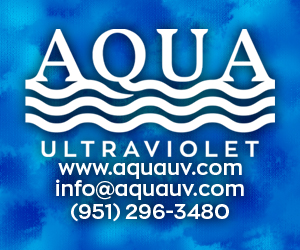
What is all the buzz about “greywater”? Due to the severity of the drought in the western United States, many water purveyors are promoting the use of second-hand water, commonly referred to as “greywater.” Water coming out of the tap is considered clean and safe for drinking water. Water that is used to wash clothes or our bodies is called greywater (as opposed to “blackwater,” which is water that was used in the toilet). Blackwater is never used for secondary purposes and is generally sent directly to sewage treatment plants to be treated to a point and then released to the ocean. If you use soap without harmful phosphates, you can send this water to the garden to water plants.
>> For more on greywater, read the accompanying feature article, “Ponds Serve a Role in Water Conservation.”
Greywater is never stored; rather, it is generally gravity-fed to the garden as it is used. Storage of greywater is not done due to the potential for harmful bacteria to multiply in storage. Greywater systems allow you to get two uses out of the water you use. Greywater is a great idea for drought-stricken parts of the world and can be used on fruit trees; however, it is not encouraged to use greywater in vegetable gardens or on any type of food you will directly eat. In terms of efficiency, greywater pales in comparison to an aquaponic system. Greywater uses the same water two times. Aquaponics uses the same water over and over…perhaps hundreds of times. The only reason it is not used more is due to evaporation. Pond-based aquaponics constitutes a closed-loop system, and you can directly eat veggies grown with pond water. There is no better way to grow backyard veggies, save water, and lower your grocery bill than an aquaponic system that is fed from nutrients from the koi you love.


